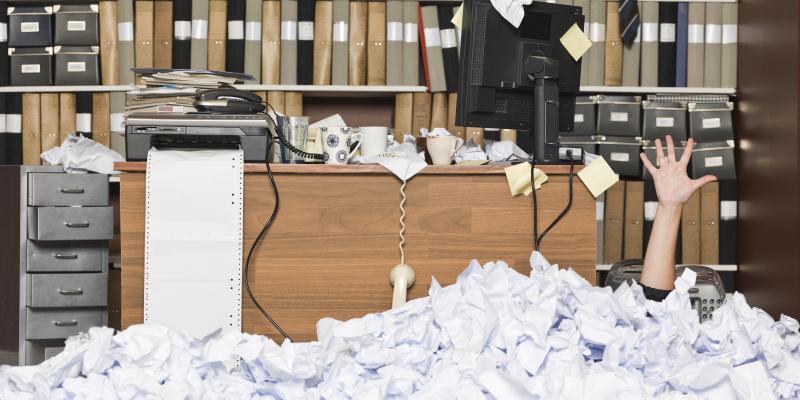Leeds Teaching Hospital NHS Trust, in the UK, has embarked on a mission to remove 95% of its fax machines by 1st January 2019. The Trust has launched an ‘Axe the Fax’ campaign to identify all machines within the hospitals, their location, phone numbers and what they are being used for before looking at how they can be replaced with more innovative and cost-effective processes.
The campaign follows research naming the NHS as the world’s largest purchaser of fax machines and a recent study by the Royal College of Surgeons of England claiming that there almost 9,000 in use across the service.
Last week, Secretary of State for Health, Matt Hancock said during a keynote speech in Manchester, that outdated IT systems and processes, such as the use of fax machines are ‘’downright dangerous.”
Richard Corbridge, Chief Digital and Information Officer at the Trust said: “We don’t underestimate the enormity of the challenge to remove all the machines in such a short time frame, but we simply cannot afford to continue living in the dark ages. The campaign aims to empower staff rather than disarm them and so far the feedback has been positive, staff are recognising that on the one hand we have hugely innovative technology being implemented in the Trust and on the other we have technology that hasn’t existed for decades in other industries.”
The Trust has 340 fax machines across the organisation but has already axed 20 fax machines and has several undergoing process mapping.
Corbridge added: “The use of nhs.net is far more secure and safe than the use of faxes. We are aiming to help services safely decommission their faxes and move to email in the first instance and take it from there.”
The Trust has raised awareness of the campaign via internal communications, as well as a highly popular social media campaign (#axethefax) which received more than 8,000 views in its first week. It has set-up a dedicated inbox to manage enquiries, which are then triaged and allocated for action by the programme managers. If a machine has been identified as being defunct it is removed and if there is any doubt, a programme manager visits the area.
Andy Webster Consultant in Emergency Medicine and Chief Clinical Information Officer said: “As a clinician the major concern I have with fax, is has it been sent to the right machine, been read by the right person, and appropriate actions have been taken. That is why we are in the process of developing a modern auditable referral system that is embedded within our electronic health record”.
Trust Computer services has already rolled out the Managed Print Service (MPS) devices and in the period between Apr and Aug 47,905 were sent electronically rather than via fax machine. The MPS are able to attribute the actions requested to the “hotspots” of high user’s department and establish if this is internal or external. The intelligence that these devices holds will be used to scope out the next phase of the program as the Trust moves to a scan-to-email only stance and even remove the option to fax from the MPS devices.
One of the key areas where staff are also keen to remove faxes is Bedboard, where wards currently send paper requests for admissions to be logged onto the PAS via an internal fax to the team. Rather than set up a generic account to do this via email the Trust plans to eliminate waste and remove the process altogether, which will also ensure best practice of real-time admissions too.
The Trust has had several NHS organisations requesting information about how it is axing the fax and has set up an email axethefaxenquiries@nhs.net to encourage and support other them with their commitment.
Richard Corbridge will be discussing the Axe the Fax campaign at UK Health Show at 11:45 on Tue 25th September in the Innovation in Practice Theatre.

